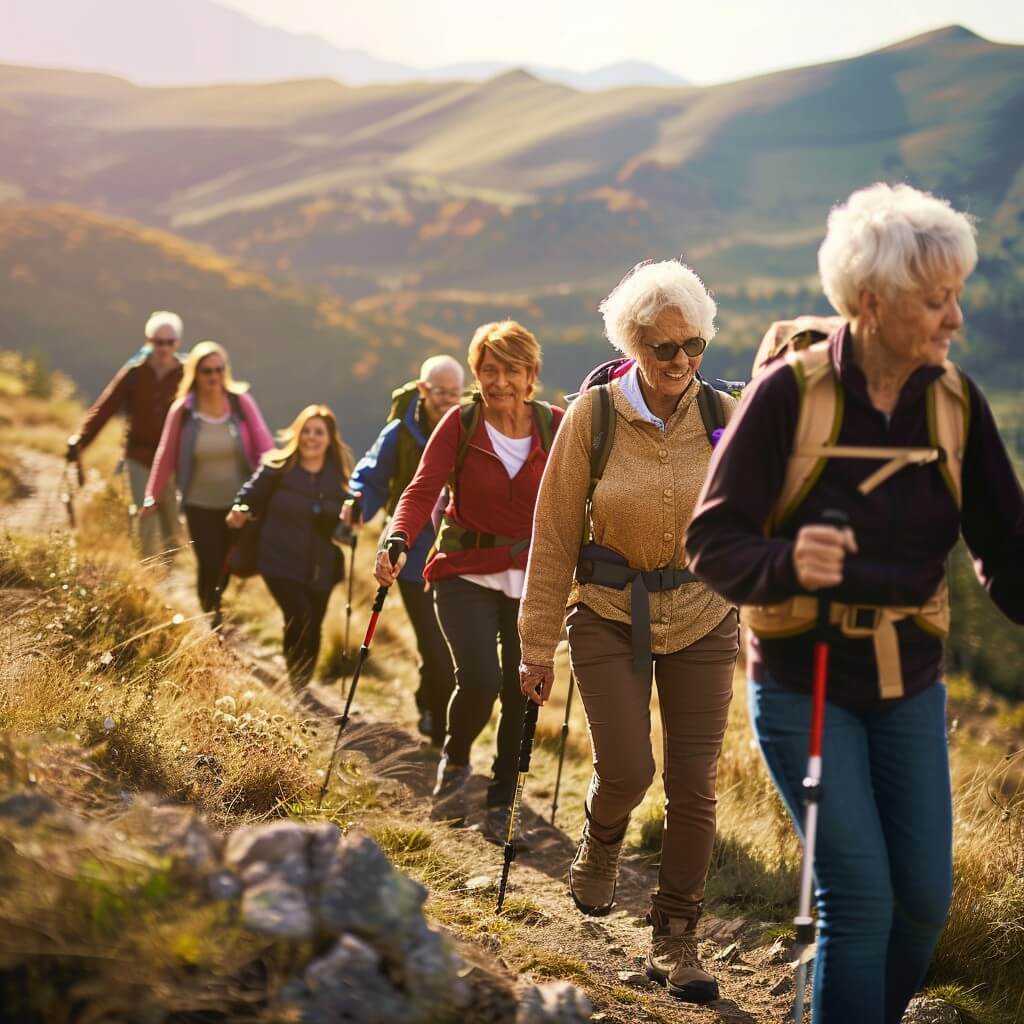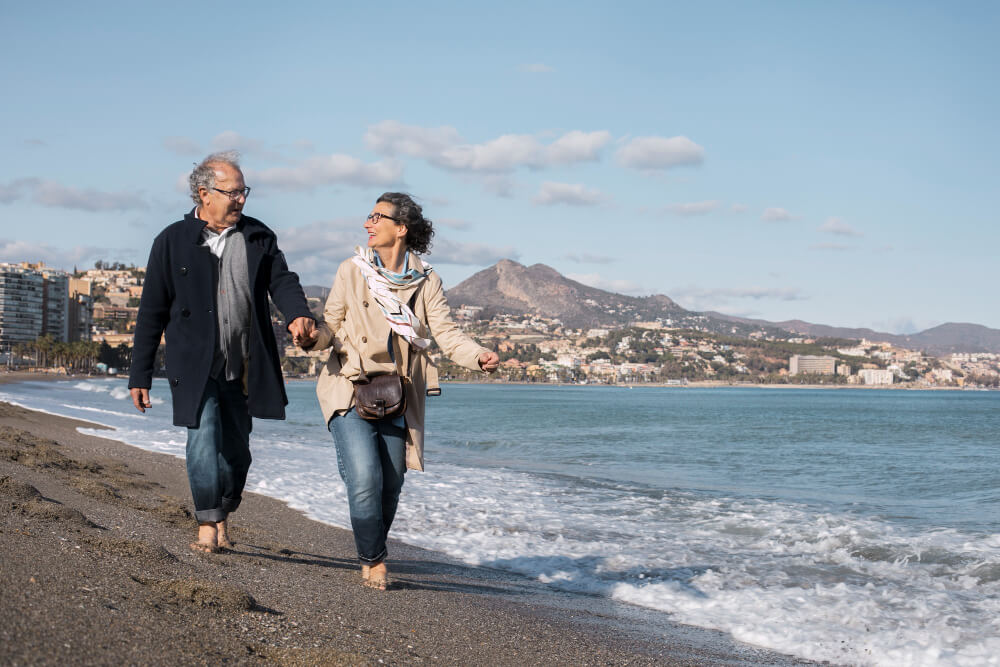
New Zealand is a dream destination for many, especially those over 50 looking for a mix of adventure, relaxation, and cultural experiences.
With its stunning landscapes, rich Maori heritage, and warm hospitality, New Zealand offers a wealth of experiences that cater to mature travellers.
This comprehensive guide will help you plan a memorable trip, addressing common questions and concerns with practical advice and relatable examples.
Common Questions and Concerns
What are the Best Times to Visit New Zealand?
Answer: New Zealand’s climate varies greatly depending on the region and time of year. However, the best times to visit are during the shoulder seasons of spring (September to November) and autumn (March to May).
- Spring: This season offers mild temperatures, blooming flowers, and fewer tourists. It’s a great time for outdoor activities like hiking and wildlife spotting.
- Autumn: Known for its colourful foliage and harvest festivals, autumn provides a picturesque backdrop and pleasant weather. It’s ideal for wine tours and scenic drives.
How Do I Stay Safe and Healthy While Travelling?
Answer: Ensuring your safety and health while travelling involves preparation and mindfulness.
- Health Insurance: Obtain comprehensive travel insurance that covers medical emergencies, trip cancellations, and lost luggage.
- Medications: Carry enough of your prescription medications to last your trip, along with a copy of your prescriptions. Consider a medical alert bracelet if you have any chronic conditions.
- Vaccinations: Check if any vaccinations are recommended for New Zealand and get them well before your trip.
- Emergency Contacts: Keep a list of emergency contacts, including local emergency services and your country’s embassy or consulate in New Zealand.
What are the Must-See Destinations?
Answer: New Zealand boasts numerous iconic destinations, each offering unique experiences. Here are some must-see places for travellers over 50:
- Bay of Islands: This subtropical region is perfect for sailing, fishing, and exploring historic sites like the Waitangi Treaty Grounds.
- Rotorua: Known for its geothermal activity, Maori cultural experiences, and relaxing hot springs, Rotorua is a must-visit.
- Queenstown: A hub for scenic beauty and adventure, Queenstown offers everything from wine tasting in Gibbston Valley to leisurely cruises on Lake Wakatipu.
- Milford Sound: A stunning fjord in the southwest of New Zealand’s South Island, known for its dramatic scenery and wildlife.
Tips for Planning Your Trip
Choose Comfortable Accommodation
Opt for accommodations that provide comfort and convenience.
Here are some tips:
- Elevators or Ground-Floor Rooms: Ensure your hotel or motel has elevators or offers ground-floor rooms to avoid stairs.
- Accessible Bathrooms: Look for accommodations with accessible bathrooms, especially if you have mobility issues.
- Proximity to Dining and Attractions: Choose places to stay that are close to restaurants, shops, and attractions to minimise travel time.
Example: The Heritage Hotel in Auckland offers a variety of room options, including accessible rooms and suites with beautiful harbour views. Its central location makes it easy to explore the city on foot.
Plan a Relaxed Itinerary
Avoid cramming too many activities into your schedule.
A relaxed itinerary allows you to enjoy your trip without feeling rushed.
Here’s a sample two-week itinerary:
Week 1: North Island
- Day 1-2: Arrive in Auckland. Spend time exploring the waterfront, visiting the Sky Tower, and enjoying a harbour cruise.
- Day 3-4: Travel to Rotorua. Visit the geothermal parks (Te Puia, Wai-O-Tapu), and experience a Maori cultural show and hangi dinner.
- Day 5-6: Head to the Bay of Plenty. Relax on the beaches, visit Mount Maunganui, and explore the local markets.
- Day 7: Drive to Wellington, the capital city. Explore Te Papa Museum and enjoy the vibrant café culture.
Week 2: South Island
- Day 8-9: Fly to Queenstown. Take a scenic cruise on Lake Wakatipu and visit local wineries.
- Day 10-11: Travel to Te Anau and take a day trip to Milford Sound for a boat tour of the fjord.
- Day 12-13: Head to the West Coast. Visit Franz Josef Glacier and relax in the hot pools.
- Day 14: Return to Queenstown for your flight home.
Consider Group Tours
Group tours can offer a structured and social way to explore New Zealand.
Benefits include:
- Planned Itineraries: Removes the stress of planning.
- Social Opportunities: Meet and travel with like-minded people.
- Local Guides: Gain deeper insights into New Zealand’s history, culture, and nature.
Example: Senior Travel New Zealand offers customised group tours for mature travellers, including highlights like the Bay of Islands, Rotorua, and Queenstown. Their tours often include unique experiences like a Maori hangi dinner and a Milford Sound cruise.
Transportation Tips
Getting around New Zealand is straightforward, but here are some transportation tips:
- Car Rental: Renting a car gives you the freedom to explore at your own pace. Ensure you have an international driving permit if required.
- Public Transport: Cities like Auckland and Wellington have good public transport systems, including buses and trains.
- Domestic Flights: For longer distances, consider flying between major cities and regions to save time.
- Scenic Trains: The TranzAlpine and Coastal Pacific trains offer stunning views and a relaxed travel experience.
Example: Margaret and John, a couple in their 60s, opted for a combination of car rental and scenic train journeys. They enjoyed the flexibility of driving through the North Island and the breathtaking views on the TranzAlpine train across the South Island.

Health and Wellness
Travelling can be tiring, so it’s important to take care of your health and wellness:
- Stay Hydrated: Drink plenty of water, especially on long flights and during outdoor activities.
- Healthy Eating: Enjoy New Zealand’s fresh produce and healthy cuisine. Try local specialties like green-lipped mussels and kiwifruit.
- Regular Breaks: Take regular breaks during sightseeing to rest and avoid fatigue.
- Exercise: Engage in light exercise like walking or swimming to stay active.
Example: During their stay in Rotorua, Jane and Tom enjoyed daily walks around the beautiful Government Gardens and soaked in the healing waters of the Polynesian Spa, which helped them stay refreshed and relaxed.
Cultural Immersion
Immerse yourself in New Zealand’s rich culture and history:
- Maori Culture: Participate in Maori cultural experiences, such as visiting a marae (Maori meeting ground), watching a traditional haka performance, and enjoying a hangi feast.
- Museums and Art Galleries: Explore museums like Te Papa in Wellington and the Auckland Art Gallery.
- Local Markets: Visit local markets to sample fresh produce, artisan goods, and interact with locals.
Example: Emma’s cultural tour included a visit to the Tamaki Maori Village in Rotorua, where she learned about Maori traditions, participated in a weaving workshop, and enjoyed a traditional hangi meal. She found the experience both educational and enriching.
Enhancing Your Travel Experience
Using Visuals
Adding photos and videos enhances your travel experience by providing visual context and memories:
- Photos: Capture beautiful landscapes, cultural experiences, and memorable moments. Use a mix of wide shots and close-ups.
- Videos: Record short clips of scenic views, cultural performances, and personal reflections.
- Infographics: Create infographics to summarise your itinerary, packing list, or travel tips.
Example: Create an infographic titled “Top 10 Tips for Over 50s Travelling to New Zealand” with tips on packing, health, and must-see destinations. Share this on your social media or travel blog to help others plan their trips.
Encouraging Interaction
Engage with fellow travellers and locals to enrich your travel experience:
- Ask Questions: Whether you’re on a tour or visiting a local market, asking questions can provide deeper insights and create memorable interactions.
- Join Social Media Groups: Participate in travel forums and social media groups focused on New Zealand travel for over 50s. Share your experiences, ask for advice, and make new friends.
- Comments and Shares: Encourage your readers to share their travel tips and experiences in the comments section of your blog or social media posts.
Example: Post a question like, “What’s your favourite hidden gem in New Zealand?” on your travel blog or social media page. This encourages engagement and provides valuable insights for your readers.
Final Thoughts
Planning the perfect New Zealand tour for over 50s involves balancing adventure with relaxation, comfort with exploration, and cultural immersion with personal wellness.
By addressing common questions, offering practical tips, and sharing relatable examples, you can create a travel experience that is both memorable and enriching.
Remember to stay flexible, embrace new experiences, and take time to savour the journey.
New Zealand’s diverse landscapes, rich culture, and warm hospitality make it an ideal destination for mature travellers seeking a fulfilling and enjoyable adventure.
Frequently Asked Questions
What’s the best time of year to visit New Zealand?
The best time to visit New Zealand is during the shoulder seasons of spring (September to November) and autumn (March to May).
During these periods, you’ll enjoy milder temperatures, fewer crowds, and beautiful scenery.
Summer (December to February) offers warmer weather but tends to be busier and more expensive.
Winter (June to August) can be cold but is ideal for skiing enthusiasts.
How long should my New Zealand tour be?
For a comprehensive experience of both North and South Islands, aim for a tour of at least 15-21 days.
This duration allows you to see major highlights like Auckland, Rotorua, Wellington, Christchurch, Queenstown, and Milford Sound without feeling rushed.
Shorter 8-12 day tours focusing on one island are also available if you have limited time.
What level of physical activity can I expect on senior tours?
Most New Zealand tours for seniors are designed with a moderate activity level in mind.
They typically include gentle walks, sightseeing, and optional activities. However, the level of activity can vary between tour operators.
Some offer more active options for fit seniors, while others cater to those preferring a slower pace.
Always check the tour details and discuss any concerns with the operator before booking.
What type of accommodation is typically provided?
Senior tours in New Zealand usually offer comfortable, quality accommodation.
This often includes a mix of hotels, motels, and lodges, with options ranging from 3-star to luxury 5-star properties depending on the tour package.
Many tours provide en-suite rooms and aim to minimise hotel changes for a more relaxed experience.
How can I ensure I choose the right tour for my needs?
To select the best tour:
- Research reputable tour operators specialising in senior travel
- Read detailed itineraries and compare different options
- Check reviews from previous travellers in your age group
- Consider the group size – smaller groups often provide a more personalised experience
- Assess the physical demands of the tour and ensure they match your capabilities
- Look for tours that offer a balance of structured activities and free time
- Ensure the tour covers the destinations and experiences you’re most interested in.